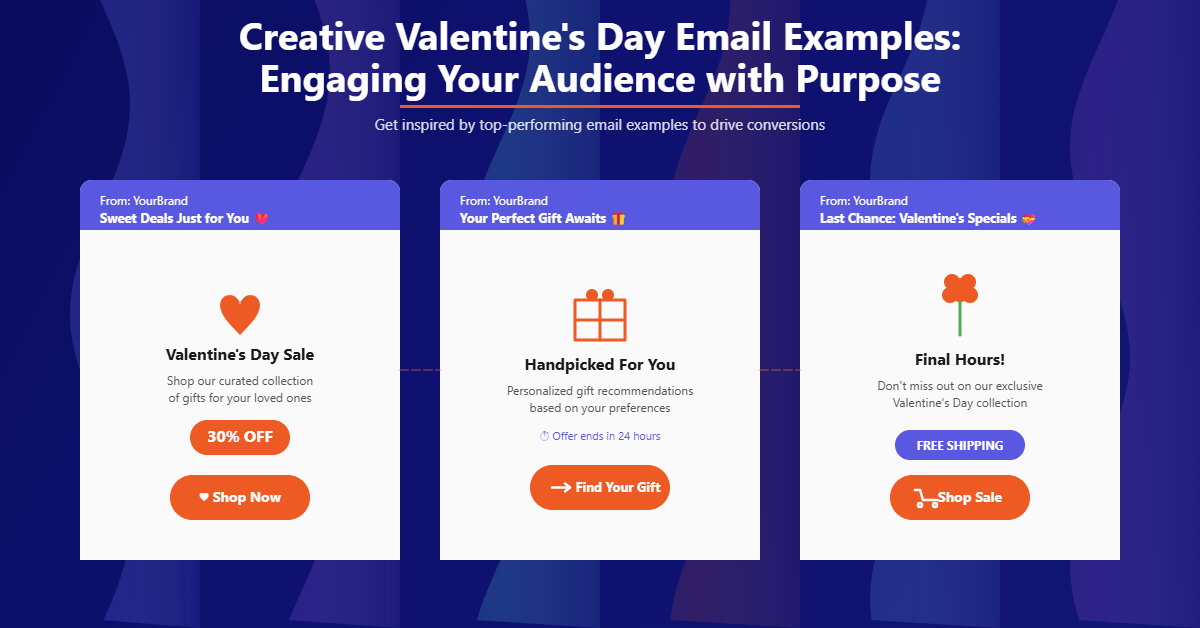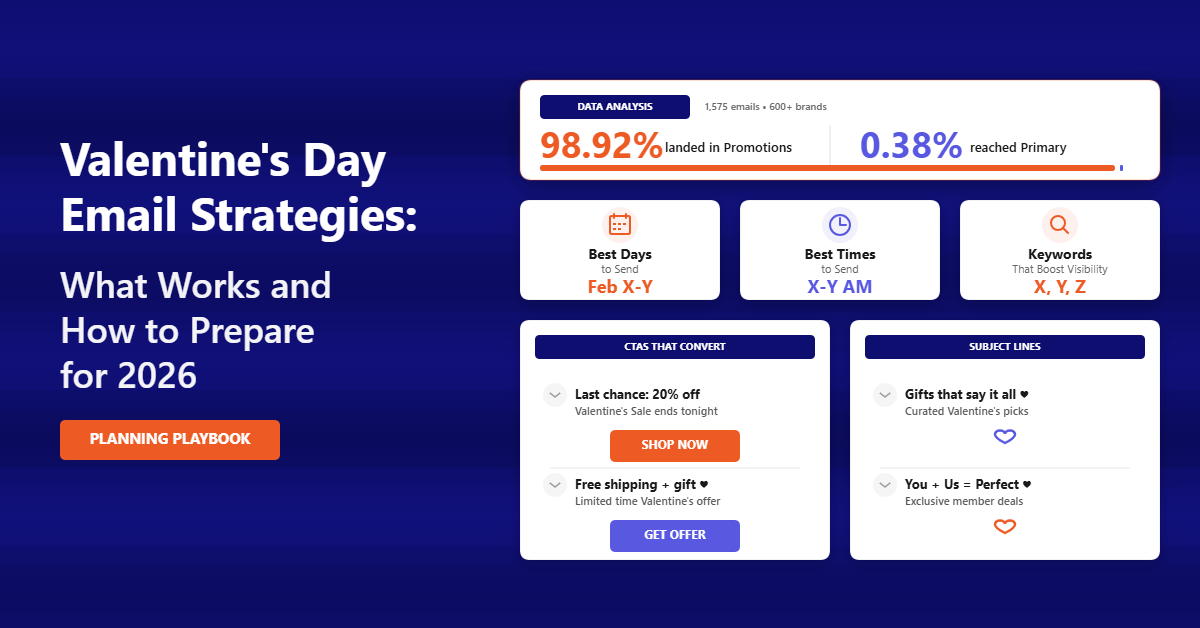If you’re an eCommerce store owner selling activewear products, here’s an interesting study that could change your marketing strategy for 2025.
We picked the 5 biggest and fastest-growing activewear brands: Nike, Adidas, Puma, Under Armour, and Asics.
Analyzing more than 200 of their campaigns revealed interesting email marketing strategies and insights. Here’s what we found.
A Remarkable Digital Sales Growth in 2024
In 2024, these athleisure brands saw significant digital sales growth, contributing substantially to their overall revenue.
For instance, Adidas reported net digital revenue of $1.694 Billion from its online sales (on adidas.com).

A similar trend is also seen with other brands including Nike, PUMA, Under Armour, and Asics.
Nike stands out with its digital sales generating 27.5% of its $51.542 Billion revenue via its online store.

A significant portion of such online sales growth, for all the brands, can be attributed to effective email marketing strategies.
We analyzed hundreds of email campaigns of these brands to uncover interesting insights for you.
Activewear Email Marketing Strategies Analysis
Explore and implement these email marketing strategies of athleisure brands to increase your customer engagement and revenue.
1. Nike Email Marketing
Known for its brand voice of motivation and resilience, Nike email marketing reflects this same spirit in every campaign. Its emails focus on limited-edition releases, personalized offers, and urgency to maximize customer engagement and drive sales.

Nike Email Marketing Strategy That Works
The Nike email marketing strategy centers around smart send times, compelling content, and deep personalization. This approach drove significant interaction, particularly during product launches and major events—helping boost revenue throughout 2024.
One standout Nike email marketing example is their focus on exclusivity. Product drops featuring terms like “limited edition” or special themes such as “Kevin Month 🎉” make customers feel part of something special. It’s a powerful way to build loyalty and enhance customer retention.
2. Puma Email Marketing
Puma’s email campaigns focused heavily on promotions, leaning more on sales events, partnerships, and holiday seasons to drive engagement. The Puma promotion strategy combined urgency with targeted messaging—resulting in higher clicks and conversions.

Strategy That Works For Puma
The Puma marketing strategy proved most effective during peak sales events and major holidays.
They championed value clarity by highlighting massive discounts upfront (“Up to 60% off + extra 30% off”).
This straightforward messaging cut through the noise and strongly appealed to bargain hunters looking for great deals.
3. Adidas Email Marketing
Adidas email marketing utilizes a strategic mix of subject lines, optimal send times, and tailored CTAs to boost customer engagement. Their email campaigns focus on both product promotions and brand connection, often through limited-time offers and exclusive events—key elements of a winning Adidas ecommerce strategy.

Strategy That Works For Adidas
Adidas nailed FOMO (Fear of Missing Out) with urgency-packed subject lines like “Final hours: Savings for all.”
Why? People hate missing a deal. It prompts immediate action—and it’s this kind of urgency that fuels both email performance and overall ecommerce success.
4. Asics Email Marketing
Asics employed a consistent approach in their email campaigns, focusing on loyalty programs, seasonal product launches, and community engagement to connect with their audience.

Strategy That Works For Asics
Asics used routine psychology, sending emails early in the day to fit into their audience’s morning habits. This alignment increases open rates because customers are in a “checking mode” during these hours.
5. Under Armour Email Marketing
Under Armour focused on product performance, exclusivity, and seasonal campaigns to engage customers. Under Armour marketing strategies centered around blending inspirational messaging with targeted promotions that resonate with their performance-driven audience.

Strategies That Work For Under Armour
Under Armour’s strategic focus on evening send times, urgency-driven campaigns, and seasonal promotions proved highly effective. It paired clear CTAs with phrases like “Last Chance,” prompting action during peak shopping windows. These tactics are a core part of Under Armour marketing strategies, aligning with their brand voice and customer expectations.
For all these brands, their strategies worked every single time because each brand taps into the core psychological triggers of its customers.
It is a common denominator in all the email campaigns from all the brands studied.
These strategies mirror broader e-commerce trends such as personalization, urgency, and simplicity. More insights below.
Takeaways for eCommerce Brands in 2025
Further cross-analysis of the email marketing strategies of these activewear brands revealed some interesting insights.
- 3 out of 5 brands send emails in the evening, the median time ranging between 03:30 pm and 06:30 pm.
- Contrast in send times with most emails sent either at the beginning of the day or during after-work hours.
- Nike and Puma also send emails close to midnight, targeting late-night shoppers.
- All five brands send at least 2 emails weekly, with Puma sending up to 5 emails a week.
- To increase their open rates, all the brands are consistent in their subject line length.
- The average subject line length is between 6-7 words.
- The subject lines of all the brands are catchy and prompt action, emphasizing urgency.
- Surprisingly, the brands use minimal emojis in both subject lines and the preview texts.
- Except for Asics, all the remaining brands write the preview text to complement subject lines with seemingly no framework.
- 3 out of 5 brands’ preview text is 50 characters or longer.
- All five brands have a 2-word CTA in most emails.
- “SHOP” is the most common word used in CTAs, with Under Armour using the word in more than 90% of the emails studied.
Interestingly, the word “Buy” was never used in any CTAs studied as a measure to avoid SPAM filters and improve email deliverability.
To Summarize
The email campaigns of the biggest activewear brands appeared unassumingly simple. Adidas’s urgency to Nike’s exclusivity strategies proves that email campaigns can result in billions of dollars. For 2025, use these insights in your email marketing campaigns. Your next email campaign could be a game-changer.
FAQs
1. What common trends do top activewear brands share in email campaigns?
These leading brands all:
- Send 2–5 emails per week, often in the evening
- Use concise (6–7 word) subject lines
- Include clear, action-focused CTAs like “SHOP”
- Emphasize personalization, urgency, and simplicity
2. How can eCommerce brands apply these strategies in 2025?
By adopting key tactics:
- Send emails during optimal time windows (especially evenings)
- Keep subject lines short and urgency-driven
- Use clear CTAs and personalized messaging
- Limit email frequency to avoid annoying subscribers
3. How often should activewear brands send marketing emails?
Most successful activewear brands send 2 to 5 emails per week. This frequency keeps them top-of-mind without overwhelming the subscriber. They often ramp up during sales seasons or product launches for higher engagement.
4. What is the best time to send activewear promotional emails?
Evening hours perform best for activewear brands. Consumers are more likely to open and engage with promotional emails after work or dinner. For example, Under Armour and Puma often send campaigns during these peak evening windows.






